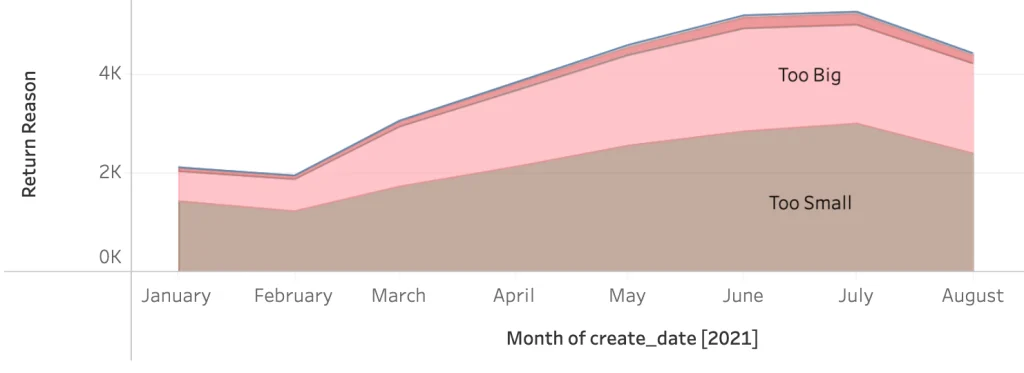Warranty Returns: This is How Ecommerce Retail Changes the Customer Journey

The ecommerce retail market is exploding, spurring new platforms, payment technology, customer shopping behaviors, and expectations on how retailers should facilitate returns. As a result, billions of shoppers experience customer journeys that never existed before.
The rapidly evolving shopping experience and the technology that enables this creates new post-purchase journeys for shoppers. The post-purchase and warranty returns experience has never been more important.
More shoppers consider a retailer’s return policy when making purchase decisions and forming brand perceptions. The customer’s post-purchase experience and returns process has become crucial to increasing customer lifetime value (CLV).
In response, retailers have shifted their view of product returns from an indication of failure to an opportunity to prove their commitment to quality products and service.
The top ecommerce retailers are doing this by paying attention to how returns affect customer behavior and creating policies that boost the experience for shoppers.
By creating an effective returns management system to collect data that can be analyzed for behavior patterns, we’ve stumbled on an interesting discovery:
Offering warranties as a return type to customers decreases refund rates by 10%.
Warranties never had such a big effect on customer behavior before. So, what happened?
To understand, we first have to look at how the acceleration of ecommerce changes the customer journey.
How Ecommerce Retail Changes the Customer Journey
With brick-and-mortar stores, enhancing the customer journey is all about providing the best shopping experience. Location, environment, check-out lines, etc. These are the things a person thinks about when deciding on where to shop.
More importantly, brick-and-mortar stores allow customers to see and feel products before deciding on buying them.
This means the quality of the product has a heavy impact on the pre-purchase experience of the customer journey.
The opposite is true for ecommerce retail.
When shopping online, the customer must decide whether they want to buy the product before ever even having a chance to see it.
This shifts the quality of the product from being a heavy factor in the pre-purchase experience to being a heavy factor in the post-purchase experience.
Customers rely on things other than the quality of the product to make a purchase decision when shopping online, such as:
- Product Descriptions and Images
- Reviews
- Return Policies
- Brand Perception
The customer journey in ecommerce is completely different from the physical one consumers took in the first marketplaces thousands of years ago.
Online shoppers have a new set of factors that determine purchase decisions and overall experiences.
This means that ecommerce retailers also have a new set of factors that take priority in developing successful marketing strategies.
How they manage their returns and warranty requests plays a bigger role in ensuring the best experience for their customers.

Returns in the Ecommerce Customer Journey
In the ecommerce customer journey, shoppers don’t know the quality of the product until they are in the post-purchase stage. Online shoppers expect to be able to return purchased products if the quality doesn’t match their expectations once they receive it.
In fact, 20% of all items bought online are returned as opposed to the average 9% return rate of brick-and-mortar stores. That’s $550 billion worth of ecommerce goods returned globally each year!
Since purchase decisions are being made without physically seeing the product, retailers that notice an unusually high return rate most likely have a problem with communication and product description, not product quality.
Therefore, instead of trying to reduce returns, retailers could use returns data to make insightful marketing decisions.
For example, this breakdown of returns by return reasons shows that customers are having a problem with selecting the right size when purchasing this particular product online.

Image Source: ReturnLogic Internal Data
Knowing this, the retailer may decide to add a sizing chart to the product description so customers can easily choose the correct measurements.
Automating returns management allows retailers to collect data on returns and make discoveries that help create better product messaging and marketing strategies to reduce return rates.
How Warranty Returns Impact Customer Behavior
So, where do warranties come into play in all of this?
Well, just like in the example above, we analyzed returns data to see how warranties impact the way customers interact with returns. Here’s the bottom line: Online shoppers want to keep their products if they can.
In the last 3 years, we’ve processed 500,000 warranty return requests, with the number of warranty requests increasing by 2000% per quarter!
This tells us that if given the chance, customers would rather get their problem with the product fixed than simply send it back.
Some retailers have tried offering exchanges as an easy solution to this.
Although this intuitively makes sense, turns out 60% of customers will still ask for a refund on average, even if exchanges are also given as an option.
But, when warranties are also offered as a return type to customers, processed refunds drop by 10%.


Image Sources: ReturnLogic Internal Data
Why do warranties affect customer returns behavior so much?
Well, going back to the ecommerce customer journey, warranties are the ultimate way to ensure products are protected because they offer to repair or replace purchases in the case of certain damages.
Exchanges don’t offer the same ease of mind because customers risk getting a replacement with the same issue as the original product.
Offering a warranty return gives the customer a chance to voice their problems with the product, rather than just being handed a new one. Providing opportunities for the customer to communicate with the brand enhances the customer experience.
Not only do warranty returns help to save the sale, but it also prevents future loss on customer lifetime value.
How Warranty Returns Can Increase Customer Lifetime Value
Growing a loyal and active customer base requires both acquisition and retention strategies to work in unison. This is done by nurturing customers at every point of the customer journey.
Now we know that returns are unique in that they play a role in each step.
Shoppers use return policies in the pre-purchase decision to determine whether or not a product is worth the risk of purchase.
Knowing this, retailers could leverage their warranty policy as a way to prove to customers that their products will be protected in the case of damages.
This strategy will help acquire new customers. However, in order to increase customer lifetime value, another strategy must be implemented to keep the retention of these new customers. This is where the post-purchase experience comes into play.
Customers are more likely to make a repeat purchase with brands that provide a pleasant returns experience than with ones that are met with frustration.
As we saw above, warranties are a preferred return type by customers because it allows them to get their problem with the product fixed, rather than just sending the product away.
Having an efficient warranty workflow that gets problems with products solved quickly will create a reputation for the brand that’ll make their customers feel protected and will make them want to come back to shop for more.

Plus, anytime a shopper makes a new warranty request, retailers can create a customer profile to keep track of customer histories.
This’ll help deepen customer relationships because having a record of
- Who each customer is
- How many times they’ve initiated a return
- Types and reasons for returns
And any additional notes will help segment customers and create targeted marketing strategies.
Showing customers only what they’d be interested in makes it feel less like they’re constantly being sold to.
Making a customer feel like promotions were handpicked for them makes them more likely to pay attention to those deals.
In today’s market, a brand’s biggest advantage is feeling genuine. Warranty returns help scale that genuine feeling by making customers feel heard.
Conclusion
The online shopping journey is different from the one retailers have been used to for generations.
Because of that, the way to approach gaining customer loyalty has also changed.
Returns, traditionally seen as an indication of failure in brick-and-mortar retail, can actually be leveraged as a major marketing tool in ecommerce.
What’s even more surprising is that offering warranty returns affect customer behavior in a way that it never has before.
Knowing the facts can help retailers leverage their warranty policies and workflows to ultimately increase their average customer lifetime value.
To learn more about how to get started with your own ecommerce store, check out the Ultimate Guide to Managing Warranty Requests, which tells you everything you need to know to optimize your warranty workflow.
We covered a lot in this post. So, we made it easy for you to refer back to the information whenever you need. The video below breaks down everything we’ve covered in a sweet 5 minutes.


